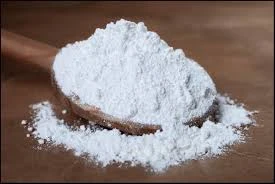
different types of food additives
Understanding Different Types of Food Additives
Food additives have become an integral part of modern food production and preservation. These substances, often unfamiliar to the average consumer, serve various crucial roles that enhance the safety, shelf life, and overall quality of our food. Understanding the different types of food additives can help us make informed choices about what we eat.
Understanding Different Types of Food Additives
2. Colorings Color additives are used to enhance or restore the color of food items, making them more visually appealing. These additives can be natural, derived from sources like beet juice or turmeric, or synthetic, such as Red 40 or Yellow 5. While color can significantly influence consumer preference, some synthetic colorings have been linked to health concerns, prompting a rise in demand for natural alternatives.
different types of food additives

3. Flavorings Flavor enhancers are substances that enhance the taste of food without contributing significant nutritional value. These can be natural, like herbs and spices, or artificial, such as monosodium glutamate (MSG). Flavor additives can help create consistent taste profiles across products, ensuring that consumers can rely on their favorite flavors. However, some individuals might be sensitive to certain flavor enhancers, leading them to avoid specific products.
4. Texturizers Texturizers, such as emulsifiers, stabilizers, and thickening agents, play a vital role in improving the texture and mouthfeel of foods. Emulsifiers help keep ingredients like oil and water mixed, which is essential in products like mayonnaise and salad dressings. Common examples include lecithin and xanthan gum. These additives ensure that food maintains its intended texture, contributing to overall consumer satisfaction.
5. Nutritional Additives Nutritional additives, including vitamins and minerals, are added to fortify foods and enhance their nutritional value. This category is particularly important in addressing deficiencies in certain populations. For example, vitamin D is often added to milk, and iron is fortified in cereals. While these additives can help improve public health, there is ongoing discussion about the effectiveness and necessity of fortification in various food products.
Conclusion As consumers become increasingly health-conscious, the demand for transparency regarding food additives continues to grow. Understanding the various types of food additives—from preservatives to nutritional enhancers—empowers individuals to make informed dietary choices. While many additives play a beneficial role in food safety and quality, it is essential to stay informed about what we are consuming. Ultimately, a well-balanced diet can often be achieved by focusing on whole foods while being mindful of the additives present in processed items. Whether embracing the convenience of modern food production or opting for natural alternatives, awareness of food additives is key to maintaining a healthy lifestyle.
-
The Safety Challenges of Ammonium Nitrate FertilizerNewsJun.26,2025
-
The Critical Role of Mining ChemicalsNewsJun.26,2025
-
Shelf Life of Glacial Acetic Acid Food GradeNewsJun.26,2025
-
Enhancing PVC Longevity with 1,2,3-Benzotriazole InnovationsNewsJun.26,2025
-
China’s Dominance in Food Additive ProductionNewsJun.26,2025
-
Can Aluminum Hydroxide Replace More Toxic Alternatives?NewsJun.26,2025
-
PE and PP Plastics with Benzotriazole AdditivesNewsJun.12,2025
Hebei Tenger Chemical Technology Co., Ltd. focuses on the chemical industry and is committed to the export service of chemical raw materials.
-

view more DiethanolisopropanolamineIn the ever-growing field of chemical solutions, diethanolisopropanolamine (DEIPA) stands out as a versatile and important compound. Due to its unique chemical structure and properties, DEIPA is of interest to various industries including construction, personal care, and agriculture. -

view more TriisopropanolamineTriisopropanolamine (TIPA) alkanol amine substance, is a kind of alcohol amine compound with amino and alcohol hydroxyl, and because of its molecules contains both amino and hydroxyl. -

view more Tetramethyl Thiuram DisulfideTetramethyl thiuram disulfide, also known as TMTD, is a white to light-yellow powder with a distinct sulfur-like odor. It is soluble in organic solvents such as benzene, acetone, and ethyl acetate, making it highly versatile for use in different formulations. TMTD is known for its excellent vulcanization acceleration properties, which makes it a key ingredient in the production of rubber products. Additionally, it acts as an effective fungicide and bactericide, making it valuable in agricultural applications. Its high purity and stability ensure consistent performance, making it a preferred choice for manufacturers across various industries.











